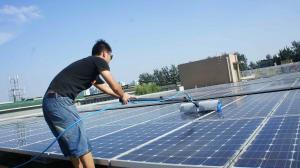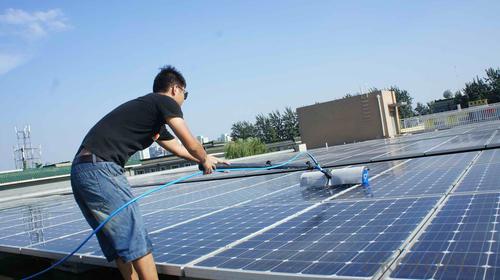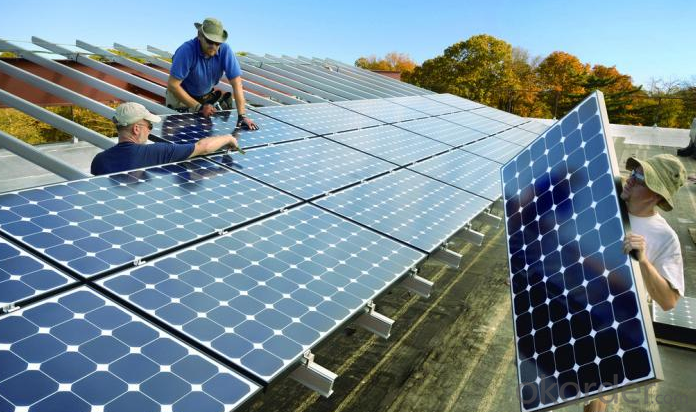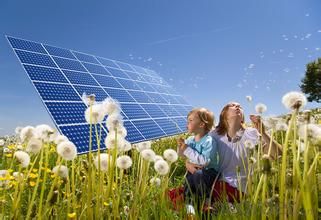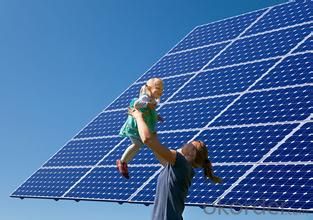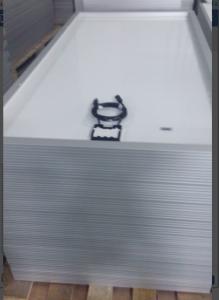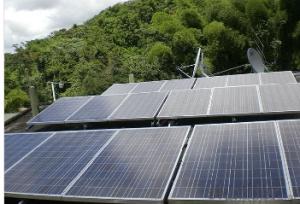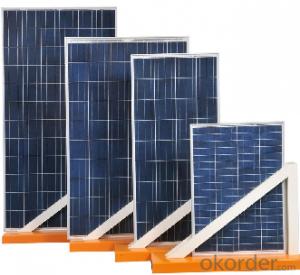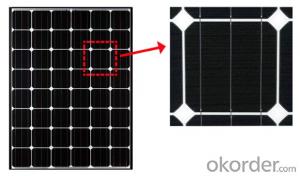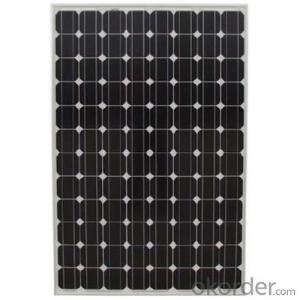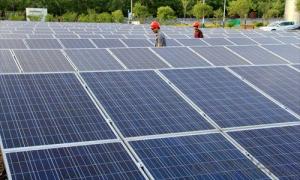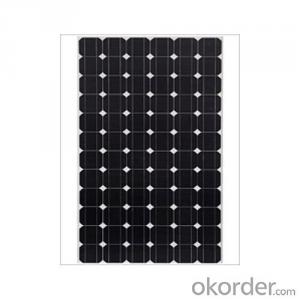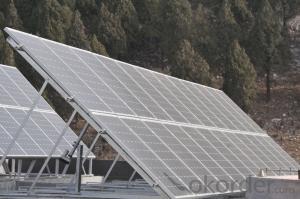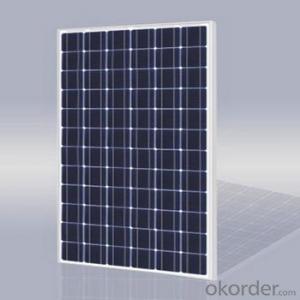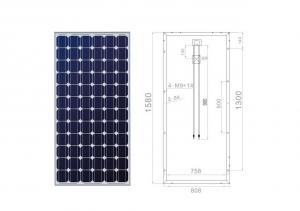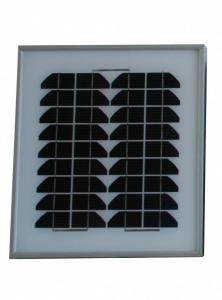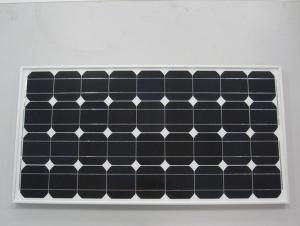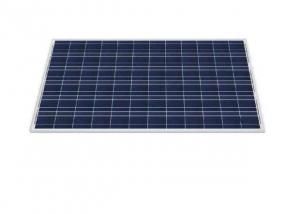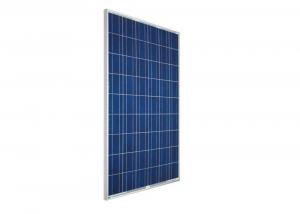Solar Panels in Wisconsin - Solar Monocrystalline 125mm Series (70w-80w)
- Loading Port:
- Shanghai
- Payment Terms:
- TT OR LC
- Min Order Qty:
- 1000 watt
- Supply Capability:
- 20000000 watt/month
OKorder Service Pledge
OKorder Financial Service
You Might Also Like
Specification
1.Structure of Solar Module Description
Solar Monocrytalline 125mm Series (70W-----80W)
2.Characteristics of the Solar Module
| Max Power Voltage Vmp (V) | 17.6 | 17.8 | 18 |
| Max Power Current Imp (A) | 3.98 | 4.21 | 4.44 |
| Open Circuit Voltage Voc (V) | 22.2 | 22.4 | 22.6 |
| Short Circuit Current Isc (A) | 4.26 | 4.5 | 4.75 |
| Max Power Pm(W) | 70 | 75 | 80 |
3.Limits of the Solar Module
Operating Temperature ﹣40℃to+85℃
Storage Temperature ﹣40℃to+85℃
Max System Voltage 700V
4.Specifications of the Solar Module
| Power | 70W/75W/80W |
| Dimension | 970x550x30mm |
| Weight | 6.5kg |
| Tolerance | ±3% |
The dimension of the modules can be changed according to the demand of clients
5.Guarantee of the Solar Module
| Products Guarantee | 2 yrs free from defects in materials and
workmanship |
| Performance Guarantee | No less than 90% within 10yrs and no less than 80% within 20yrs |
| Certificates | IEC,ISO,TUV,CE |
6.Applications of the Solar Module
1.Electricity
2.Heat energy
7.IMages of the Solar Module
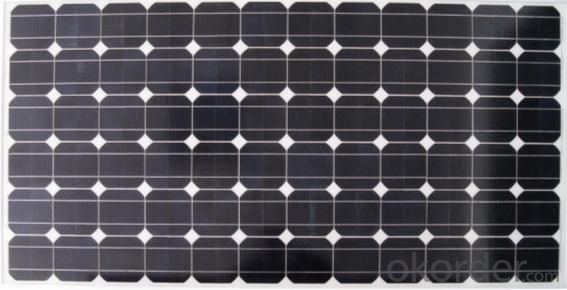
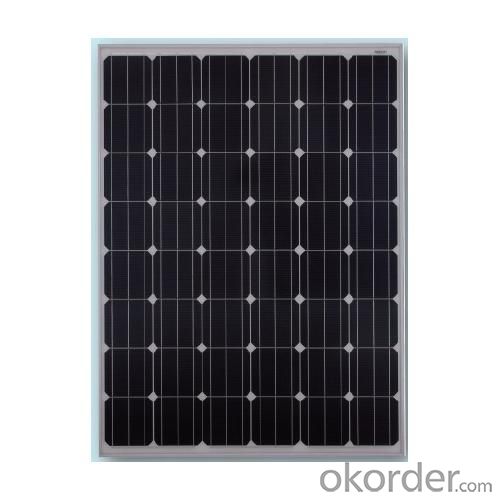
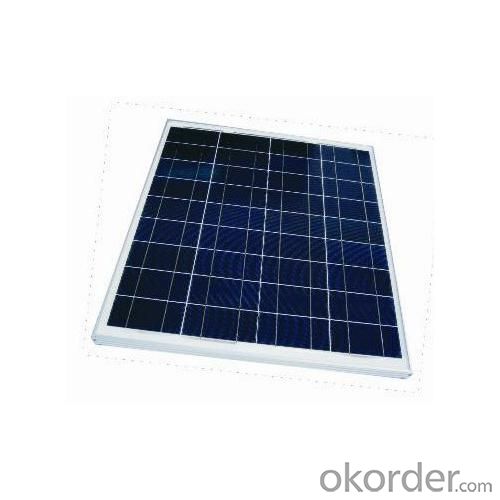
FAQ
1. Q: Do you have your own factory?
A: Yes, we have. Our factory located in Jiangyin city, jiangsu province.
2. Q: How can I visit your factory?
A: Before you take off from your country, please let us know. We will show you the way,or arrange time to pick you up if possible.
3. Q: Do you provide free sample?
A: Usually we do not offer free sample
4. Q: Could you print our company LOGO on the nameplate and package?
A: Yes, we can do that.
- Q: Can solar panels be installed on a car or electric vehicle?
- Yes, solar panels can be installed on a car or electric vehicle. These panels can harness sunlight and convert it into electricity to help power the vehicle's battery or ancillary systems. While the amount of energy generated may be limited, solar panels on cars can be a sustainable and environmentally friendly addition, providing some extra charging capability and reducing reliance on traditional charging methods.
- Q: solar panels or light parts
- They make lights that have solar panels built into them. Due to the solar cell, they can sense when it gets dark and thus switch on the light automatically. Look at Northern Tool or Harbor Freight web sites for ideas.
- Q: I need a solar panel for my laptop as i am going camping in the desert, and i need my laptop. There are two choices of solar panels, One is 0 watts and 2 V and maximum power current 0.56 amps. The other one is 2 watts, 2 V and no mention of current. My laptop plug says input 00-240V and .5A and then output 5V-5A. Which one should i get for my laptop. If there are other choices please tell me ill look them up on OKorder.Thanks
- I'm afraid neither of these panels will do much for charging or running your laptop. If the power brick is supposed to emit 5 volts at 5 amps, that's 75 watts. Neither of those panels provides enough voltage and the power output is obviously far too small. The capabilities of solar power are vastly overestimated for small panels. Sunlight is limited to about kilowatt per square meter under ideal conditions (summer time, clear blue sky, for a few hours around noon in the US southwest). But consumer panels top out at about 5% efficiency, so your limit is 50 watts per square meter - in other words you would need about half a square meter, or about six square feet, of panel to provide 75 watts. And even under ideal conditions you will only get that much for a few hours each day. Also, the panel's voltage output is not regulated, so even if you find a panel that emits 5 volts (this would actually have to be made up of groups of 30 cells in series, as they emit half a volt each at most) you can't just connect the panel output into your laptop's DC in. You'd need a regulated DC-to-DC supply, and since that is not 00% efficient it will cost a bit of the power... now you need even more panel area. All in all, not really a practical thing to carry along on a camping trip.
- Q: Can solar panels be installed on factories or manufacturing facilities?
- Yes, solar panels can definitely be installed on factories or manufacturing facilities. In fact, these large industrial buildings often have expansive roof spaces that are ideal for installing solar panels. By harnessing solar energy, factories and manufacturing facilities can significantly reduce their reliance on traditional energy sources, lower their carbon footprint, and potentially save on electricity costs in the long run.
- Q: Can solar panels be installed on airports or transportation hubs?
- Yes, solar panels can be installed on airports or transportation hubs. In fact, many airports and transportation hubs worldwide have already adopted solar energy systems to power their operations and reduce their carbon footprint. Installing solar panels on these facilities not only helps generate clean energy but also provides an opportunity for sustainable and renewable power sources.
- Q: Can solar panels be installed on water bodies or reservoirs?
- Yes, solar panels can be installed on water bodies or reservoirs. This is known as a floating solar power plant or floating photovoltaic system. It involves placing solar panels on floating platforms that are anchored to the bottom of the water body or reservoir. This innovative approach allows for the utilization of otherwise unused space, reduces evaporation, and provides cooling benefits to the solar panels, increasing their efficiency.
- Q: I know that the Solar panels store the power from the sun in the daytime, where does that stored energy go from there? Is it stored in the batteries? And how would you keep the batteries topped up if you had no Electric? by a generator? interested in solar panels for abroad, but need more info.
- solar panels collect the suns energy and turns that into electricity that is then stored in batteries. attached to the batteries is another device that takes the power from the batteries and turns it into power you can use in your house. it is a very expensive power alternative.
- Q: could any tell me what type off panel is the best tube or flat and how much it should be. I live in N Ireland
- the okorder himin solar
- Q: How do solar panels affect the property taxes?
- Solar panels can potentially affect property taxes in a couple of ways. In some states or localities, installing solar panels may increase the assessed value of a property, leading to higher property taxes. However, other jurisdictions offer exemptions or incentives that can reduce or eliminate the increase in property taxes associated with solar panel installations. It is advisable to consult with local tax authorities or experts to understand the specific impact on property taxes in a particular area.
- Q: With no moving parts, no fuel piping and so on...
- The only way I know of is to invest the money in the stock market. Most savings accounts only pay 3% intrest. While stocks float and if you don't know what you are doing you will never make as much money as you could save on your electric bill. Then the fact that you have to pay the electric bill out of the money. In the end you rented electric and can never get your money back. You can always sell the solar electric system and get your money back plus a profit. Not many people live in the same house even 20 years so it will sell. Toss the coin. It is what ever is best for you.
Send your message to us
Solar Panels in Wisconsin - Solar Monocrystalline 125mm Series (70w-80w)
- Loading Port:
- Shanghai
- Payment Terms:
- TT OR LC
- Min Order Qty:
- 1000 watt
- Supply Capability:
- 20000000 watt/month
OKorder Service Pledge
OKorder Financial Service
Similar products
Hot products
Hot Searches
Related keywords
